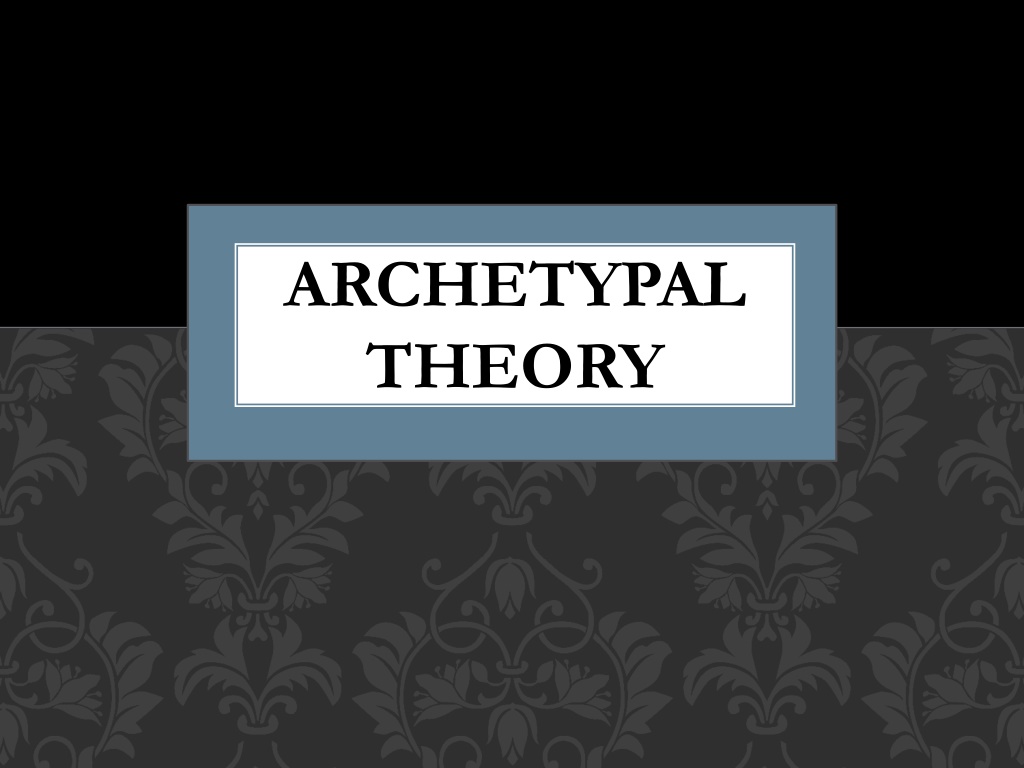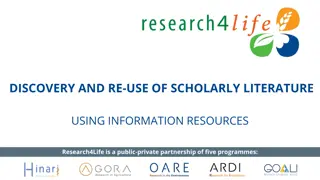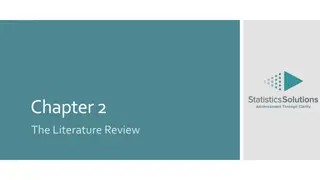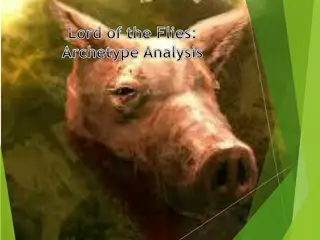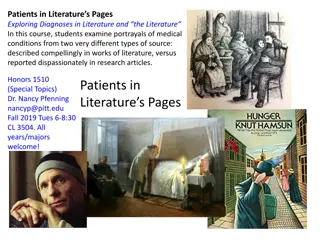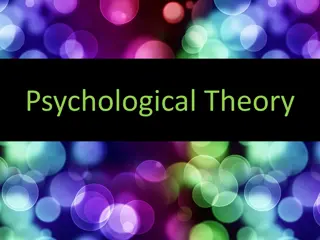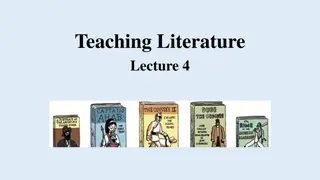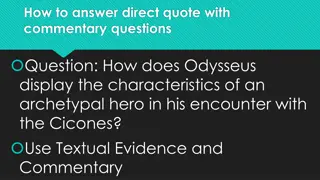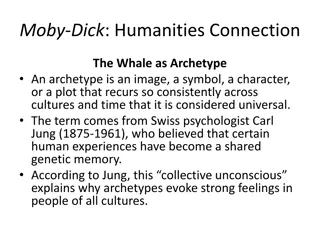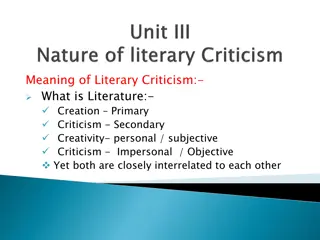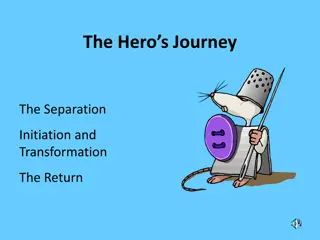Exploring Archetypal Theory in Literature
Delve into the world of archetypal theory, rooted in the works of Sigmund Freud and Carl Jung. Uncover the significance of symbols and recurring figures in different cultures, as well as how traditional archetypes transcend genres and time periods. Understand the impact of archetypal characters, images, and situations on literary interpretation and analysis.
Download Presentation

Please find below an Image/Link to download the presentation.
The content on the website is provided AS IS for your information and personal use only. It may not be sold, licensed, or shared on other websites without obtaining consent from the author. Download presentation by click this link. If you encounter any issues during the download, it is possible that the publisher has removed the file from their server.
E N D
Presentation Transcript
ARCHETYPAL THEORY
ARCHETYPAL THEORY Sigmund Freud is the father of psychoanalysis. He based many of his theories on the idea of the social archetype which causes archetypal theory to have similarities with Psychological Criticism (which we will look at later this semester. His pupil, Carl Jung, refined Freud s theories and expanded them into a more cross-cultural philosophy.
ARCHETYPAL THEORY Critics who examine texts from a archetypal standpoint are looking for symbols. Jung defined an archetype as a figure...that repeats itself in the course of history wherever creative fantasy is fully manifested.
ARCHETYPAL THEORY Jung theorized that human beings were born with an innate knowledge of certain archetypes. The evidence of this, Jung claimed, lay in the fact that some myths are repeated throughout history in cultures and eras that could not possibly have had any contact with one another.
ARCHETYPAL THEORY Every culture has a creation story, a life-after-death belief, and a reason for human failings, and these stories when studied comparatively are far more similar than different.
ARCHETYPAL THEORY When looking for archetypes, critics take note of general themes, characters, and situations that recur in literature across writers, genres, periods, and societies.
ARCHETYPAL THEORY Traditional literary and mythological archetypes can be successfully translated to other genres and time periods. Because they draw on feelings, situations, concerns, and issues that have been a part of the human condition in every generation, the plays of William Shakespeare, the novels of Jane Austen, the episodes of Homer can be, and have been, updated and reformatted time and time again.
THREE MAIN POINTS OF STUDY 1. archetypal characters 2. archetypal images 3. archetypal situations (See handout for more detailed examples)
ESSENTIAL QUESTIONS 1. Examine all of the characters major and minor and their situations. What archetypes seem to be present? 2. How do any of the characters change over time? What events or people make them change? 3. What is suggested in the setting (time of day, season of year, location garden, body of water, etc.) that might suggest an archetypal reading?
ESSENTIAL QUESTIONS 4. What types of symbols are used? What do they represent? 5. How are the symbols in this work different from the traditional uses of those symbols? What is significant about this difference? 6. What myths are at work in different parts of this work? What features of the story are reminiscent of other stories you know?
DONT FORGET On Tuesday, February 18th you will have your first literary criticism microtheme due to turnitin.com. You have three short stories to choose from: This Is What it Means to Say Phoenix, AZ by Sherman Alexie (Approaching Literature, page 282) The Lone Ranger and Tonto Fistfight in Heaven by Sherman Alexie (Approaching Literature, page 291) Inside Dachau by Sherman Alexie (text is online) *All pieces can also be found on our ENH 110 web page!
